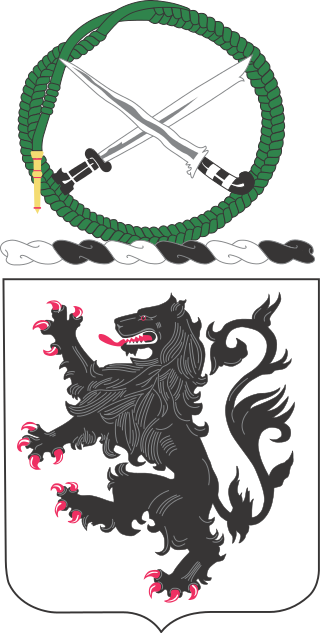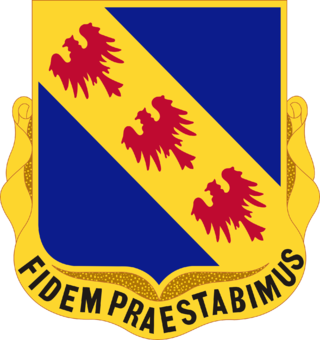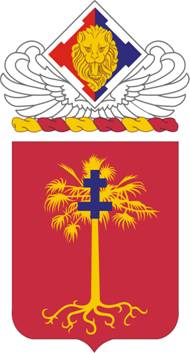
The 84th Training Command ("Railsplitters") is a formation of the United States Army. During World War I it was designated the 84th Division, American Expeditionary Forces; during World War II it was known as the 84th Infantry Division. From 1946 to 1952, the division was a part of the United States Army Reserve as the 84th Airborne Division. In 1959, the division was reorganized and redesignated once more as the 84th Division. The division was headquartered in Milwaukee in command of over 4,100 soldiers divided into eight brigades—including an ROTC brigade—spread throughout seven states.

The 95th Infantry Division was an infantry division of the United States Army. Today it exists as the 95th Training Division, a component of the United States Army Reserve headquartered at Fort Sill, Oklahoma.

The 103rd Infantry Division was a unit of the United States Army that served in the U.S. Seventh Army of the 6th Army Group during World War II.

The 88th Infantry Division was an infantry division of the United States Army that saw service in both World War I and World War II. It was one of the first of the Organized Reserve divisions to be called into federal service, created nearly "from scratch" after the implementation of the draft in 1940. Previous divisions were composed of a core of either Regular Army or National Guard personnel plus draftees. Much of the experience in reactivating it was used in the subsequent expansion of the U.S. Army.

The 83rd Infantry Division ("Thunderbolt") was a formation of the United States Army in World War I and World War II.

The 92nd Infantry Division was an African American, later mixed, infantry division of the United States Army that served in World War I, World War II, and the Korean War. The military was racially segregated during the World Wars. The division was organized in October 1917, after the U.S. entry into World War I, at Camp Funston, Kansas, with African American soldiers from all states. In 1918, before leaving for France, the American buffalo was selected as the divisional insignia due to the "Buffalo Soldiers" nickname, given to African American cavalrymen in the 19th century. The divisional nickname, "Buffalo Soldiers Division", was inherited from the 366th Infantry, one of the first units organized in the division.

Camp Shelby is a military post whose South Gate is located at the southern boundary of Hattiesburg, Mississippi, on U.S. Highway 49. It is the largest state-owned training site in the nation. During wartime, the camp's mission is to serve as a major independent mobilization station of the United States Army Forces Command (FORSCOM). Camp Shelby Joint Forces Training Center is the largest reserve component training site, covering 136,000 acres (550 km2), allowing up to battalion-level maneuver training, Gunnery Table 8-12, field artillery firing points and a wide range of support facilities. This is the normal Annual Training location for National Guard and Reserve units located in Mississippi, Alabama, and Tennessee. However, units from across the country use its assets to support a variety of missions. The 2nd Battalion, 114th Field Artillery conducts its gunnery training and has the bulk of its combat equipment stored in the Mobilization and Annual Training Equipment Site (MATES) located there.

The 85th Infantry Division also known as "Custer Division" was an infantry division of the United States Army in World War I and World War II. It currently exists as the 85th Support Command.

Since the establishment of the United States Army in 1775, three regiments have held the designation 28th Infantry Regiment. The first was a provisional unit that was constituted on 29 January 1813 and served during The War of 1812. The second was a reorganization and redesignation of 2nd Battalion, 19th Infantry Regiment on 1 October 1866 for the American Indian Wars. This incarnation of the 28th Infantry Regiment lasted until 15 March 1869, when it was consolidated back into the 19th Infantry Regiment. The third version of the 28th Infantry Regiment is the one that has the permanent designation and history, and is the one this article is about.

The 16th Infantry Regiment is a regiment in the United States Army and has traditionally been a part of the 1st Infantry Division.

The 205th Infantry Brigade, was first formed as part of the United States Army Reserve's 103rd Division. It was active from 1921 to 1942 and then from 1963 through 1994, and then reformed in 2006.

The 355th Infantry Regiment is an infantry regiment of the United States Army. The 1st Battalion of the regiment an active unit of the United States Army Reserve.

The 34th Armor Regiment is an armored regiment of the United States Army formed in 1941.

The 320th Field Artillery Regiment is a field artillery regiment of the United States Army. A parent regiment under the U.S. Army Regimental System, the 320th FAR currently has two active elements in the 101st Airborne Division : 1st Battalion, 320th FAR "Top Guns" in 2nd Brigade Combat Team; and 3rd Battalion, 320th FAR "Red Knight Rakkasans" in 3rd Brigade Combat Team. The regiment served with the 82nd Airborne Division during World Wars I and II, and regimental elements have served with the 82nd and 101st Airborne Division, the 193rd Infantry Brigade and the Berlin Brigade, and conducted combat operations in the Dominican Republic, Vietnam, Grenada, Operations Desert Shield and Storm, and the Global War on Terror.

The 339th Infantry Regiment is an infantry regiment of the United States Army, raised for service in World War I, that served in the North Russia Intervention and World War II.

The 337th Infantry Regiment was an American National Army Infantry Regiment first organized for service in World War I as part of the 85th Division. It later served in the Mediterranean Theater during World War II. Since then it has served as a training regiment, training Army Reserve and Army National Guard soldiers for overseas service.
The 340th Infantry Regiment was a National Army unit first organized for service in World War I as part of the 85th Infantry Division in Europe. Since then it has served as a training regiment, training Army Reserve and Army National Guard soldiers fighting in the War in Afghanistan (2001-2021) and the War in Iraq.

The 326th Infantry Regiment was an infantry regiment of the United States Army that saw active service during World War I, as part of the 82nd Division and fought in the Meuse-Argonne Offensive and was inactivated in 1919. The regiment was reactivated during World War II, again as part of the 82nd Infantry Division, and was converted into a glider infantry formation, becoming the 326th Glider Infantry Regiment. Originally part of the 82nd Airborne Division, the regiment transferred to the 13th Airborne Division. However, despite training for almost three years, the 326th was never involved in any combat.
The 351st Infantry Regiment is a United States Army infantry regiment first organized in the National Army for service in World War I as part of the 88th Division in Europe. During the interwar period, it was reconstituted in the Organized Reserve with the 88th Division and later served in the Mediterranean Theater during World War II. Since then, it has served as a training regiment, training Army Reserve and Army National Guard soldiers for service overseas after the September 11 terrorist attacks.
The 338th Infantry Regiment was a National Army Infantry Regiment first organized for service in World War I as part of the 85th Infantry Division in Europe. It later served in the Mediterranean Theater during World War II. Since then it has served as a training regiment, training Army Reserve and Army National Guard soldiers for overseas service after the September 11 terrorist attacks.

















